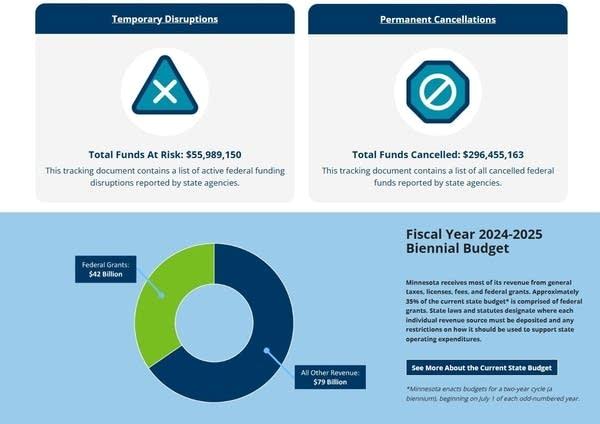As federal funding for scientific research faces significant cuts, North Carolina stands on the brink of losing vital resources that fuel innovation, education, and economic growth. With leading universities and research institutions heavily reliant on government support, the proposed reductions threaten to undermine breakthroughs in health, technology, and environmental conservation. This looming crisis not only jeopardizes the state’s scientific community but also risks long-term consequences for North Carolinians who depend on advancements driven by federal science investments.
Science Funding Cuts Threaten North Carolina Research Institutions
The ripple effects of proposed federal budget cuts to scientific programs are already stirring anxiety across North Carolina’s leading research hubs. Institutions that have long been at the forefront of innovation-from biotechnology labs in Research Triangle Park to natural science departments at state universities-face a looming crisis in funding. These reductions threaten not only the progress of critical research but also put at risk the jobs of thousands of scientists, technicians, and support staff who drive North Carolina’s economy and global scientific influence.
Key concerns raised by local experts include:
- Slowed development of breakthrough medical treatments and technologies
- Increased difficulty in attracting and retaining top-tier talent
- Potential loss of competitive research grants tied to federal funding levels
- Reduction in STEM educational opportunities for students statewide
| Institution | Projected Budget Cut | Impact Area |
|---|---|---|
| Duke University | 15% | Biomedical Research Programs |
| University of North Carolina | 12% | Environmental Science Initiatives |
| NC State University | 18% | Engineering & Technology Development |
| Research Triangle Park | 20% | Private-Public Collaborative Grants |
Impact on Local Innovation and Economic Growth Raises Alarms
The proposed federal cuts to scientific funding pose a direct threat to North Carolina’s burgeoning innovation ecosystem. Known for its thriving research universities and tech startups, the state relies heavily on federal grants to fuel groundbreaking projects and entrepreneurial ventures. Without sustained investment, local innovators fear a stagnation in critical technological advancements, which could lead to a decline in patent filings, reduced venture capital interest, and an erosion of North Carolina’s competitive edge on the national stage.
Economic analysts warn that the ripple effects will extend beyond academia, impacting job creation and regional economic growth. Key industry sectors such as biotechnology, clean energy, and advanced manufacturing stand to lose valuable momentum. As evidence of the broader risks, consider the following recent data on North Carolina’s science-driven economic contributions:
| Sector | Annual Revenue (Billion $) | Jobs Supported |
|---|---|---|
| Biotechnology | 15.2 | 38,000 |
| Clean Energy | 7.8 | 22,000 |
| Advanced Manufacturing | 12.5 | 45,000 |
Experts emphasize that slashing funding could lead to:
- Decreased research opportunities at state universities
- Lower attraction and retention of top scientific talent
- Widening economic disparities as innovation hubs falter
Experts Call for Increased Federal Support to Safeguard North Carolina’s Scientific Future
North Carolina’s vibrant scientific community is at a crossroads as federal funding faces unprecedented cuts, raising alarms among researchers and industry leaders alike. Key figures emphasize that reductions in grants and support threaten not only groundbreaking research but also the economic vitality tied to innovation hubs across the state. Universities, biotech firms, and public health initiatives rely heavily on federal dollars, and experts warn that scaling back could dismantle years of progress in areas such as cancer research, environmental science, and advanced manufacturing.
In a recent panel discussion, specialists outlined urgent priorities for federal investment to maintain North Carolina’s competitive edge. These include:
- Boosting funds for STEM education programs to cultivate the next generation of scientists and engineers.
- Expanding grants for translational research that accelerate laboratory discoveries into real-world solutions.
- Supporting infrastructure upgrades at leading universities and research centers.
| Funding Area | Impact in NC | Annual Shortfall ($M) |
|---|---|---|
| Biomedical Research | Jobs, Innovation | 45 |
| Environmental Science | Climate Adaptation | 20 |
| STEM Education | Workforce Growth | 30 |
To Conclude
As federal support for scientific research faces significant cuts, the ramifications for North Carolina could be profound. From innovation hubs in Raleigh to university labs across the state, the potential reductions in funding threaten to stall progress, limit job growth, and undermine the state’s competitive edge in critical industries. Without sustained investment, North Carolinians may find themselves on the losing end of a nationwide retreat from science – a move that experts warn could have lasting consequences for the region’s economy and well-being. The unfolding debate over science funding is not just a policy issue; it is a pressing matter that demands attention from lawmakers and citizens alike.
